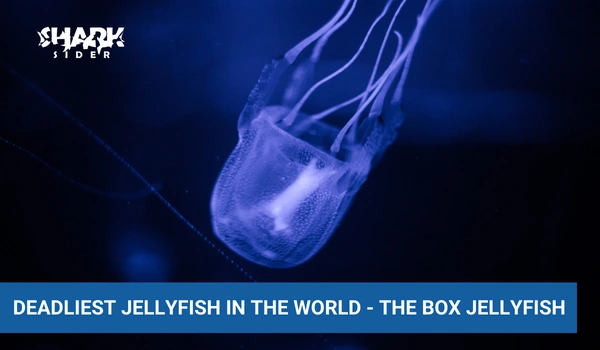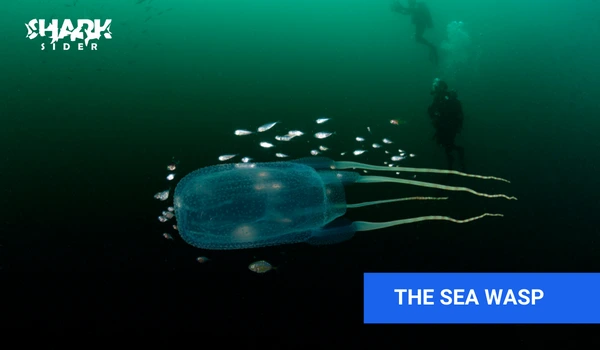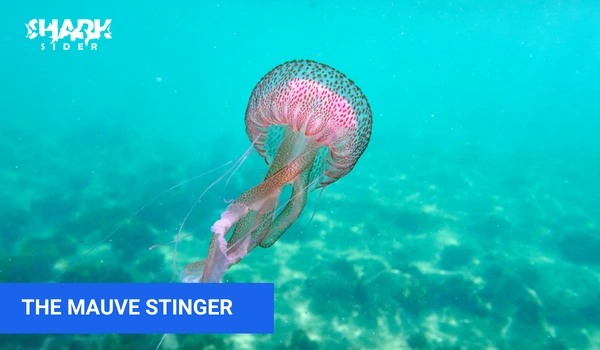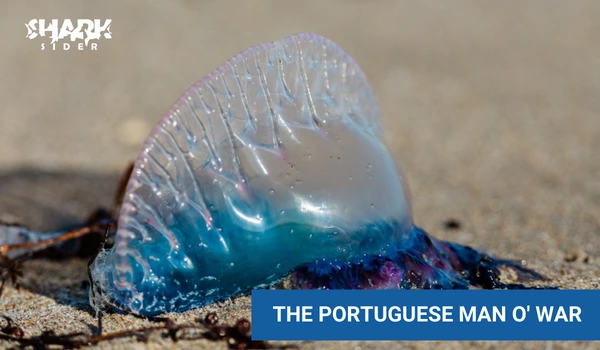The jellyfish, a primitive organism made up of only four parts, can be as mesmerizing and beautiful to look at as it can be devastatingly deadly. Many varieties live in our oceans but what makes some truly stand out are their toxins – the most toxic creatures on the planet! In this blog post, we will explore which species pose the greatest threat by examining their venom strength and geographic distribution. Prepare yourself for an eye-opening dive into some of nature’s deadliest jellyfish in the world!
Most jellyfish have evolved to produce venom as a natural defense mechanism in order to survive and mate. This toxicity can vary from one species to another, but some are far more deadly than others.
The box jellyfish

The box jellyfish (class Cubozoa), is widely regarded as the most venomous creature on earth, capable of killing up to 60 people in minutes. It has been known to cause extreme pain, paralysis, and even death within moments of contact due to its potent venom.
Where are box jellyfish found?
The box jellyfish are found in the waters around Australia, Thailand, Malaysia, the Philippines, and the Indo-Pacific region.
Box jellyfish size
The size of a box jellyfish can range from a few centimeters to as large as a basketball with tentacles that can grow up to 10 feet long. Despite their size, they are almost transparent and can be difficult to spot in the water, making them a danger to swimmers and divers.
Box jellyfish sting
The sting of a box jellyfish can be excruciatingly painful and can cause death in as little as five minutes. It releases a potent neurotoxin that attacks the heart, nervous system, and skin cells. The venom is so potent that it can kill a human within a few minutes of being stung, which is why the box jellyfish is considered one of the most dangerous creatures in the ocean.
Box jellyfish eyes
Interestingly, the box jellyfish has a set of 24 eyes, which are used to detect light and dark and to help it navigate in the water. The eyes are positioned on each of the four sides of the box jellyfish’s body, giving it a 360-degree view of its surroundings.
What do box jellyfish eat?
Box jellyfish feed on small fish and crustaceans, which they capture using their venomous tentacles. They have a ring of tentacles that hang down from their bell, which they use to immobilize their prey. Once the prey is immobilized, the box jellyfish uses its tentacles to pull the food into its mouth, which is located on the underside of its bell.
Box jellyfish sting treatment
If you are stung by a box jellyfish, it is crucial to seek immediate medical attention. The sting can cause respiratory distress, cardiac arrest, and even death. Treatment involves flushing the area with vinegar to neutralize the venom, followed by the application of heat to the affected area. Antivenom is also available, but it must be administered by a trained medical professional. It is essential to remember that prevention is the best strategy, so it is important to avoid swimming in areas where box jellyfish are known to inhabit, especially during the breeding season, which is from October to May.
The Portuguese man o’ war
The Portuguese man o’ war is a unique and dangerous marine creature that is often mistaken for a jellyfish. It is typically found in temperate and tropical waters. Its toxins can cause a wide range of symptoms from intense pain to fever, chills, nausea, and even shock. In extreme cases, it may lead to death due to organ failure caused by the venom’s powerful effect on the body.
Portuguese man o war size
The Portuguese man o’ war has a distinctive appearance, with a blue or purple gas-filled float that is shaped like a balloon and can measure up to 12 inches in length. Its tentacles, which trail below the float, can extend up to 165 feet in length, making it one of the longest animals in the world.
Portuguese man o’ war sting
The Portuguese man o’ war is known for its painful and dangerous sting. It contain venomous cells called nematocysts, which can cause severe pain, swelling, and redness. The sting can also lead to other symptoms such as fever, muscle and joint pain, and difficulty breathing. In some cases, the venom can be life-threatening, especially for those who are allergic to it.
Portuguese man o’ war life cycle
The Portuguese man o’ war has a complex life cycle that includes both sexual and asexual reproduction. The adult jellyfish, which is actually a colony of specialized polyps, releases gametes (sperm and eggs) into the water where fertilization occurs. The fertilized eggs develop into planula larvae, which swim and drift in the ocean currents for several months before settling on a suitable substrate and metamorphosing into a polyp. The polyp then begins to reproduce asexually, producing genetically identical buds or medusae (juvenile jellyfish). The medusae grow and eventually detach from the polyp, becoming free-swimming adult jellyfish. This life cycle allows the Portuguese man o’ war to reproduce quickly and effectively, leading to its ability to thrive in various ocean environments.
Portuguese man o’ war habitat
They are commonly found in the Atlantic, Pacific, and Indian oceans, often drifting with ocean currents. They prefer warm waters and can be found in the open sea, as well as close to shore. Their primary diet consists of small fish and plankton.
Portuguese man o’ war sting treatment
It is important to seek medical attention immediately after being stung by a Portuguese man o’ war, especially if you experience any severe symptoms. Treatment typically involves removing any remaining tentacles from the skin and applying hot water or vinegar to the affected area to help neutralize the venom. Pain medication and antihistamines may also be prescribed to alleviate symptoms. It is crucial to avoid rubbing or scratching the affected area, as this can cause the venom to spread and worsen the symptoms.
More types of the deadliest jellyfish in the world:
The sea wasp

The sea wasp (Chironex fleckeri), also known as Australian box jelly, is found mainly in the Pacific Ocean, particularly around Australia and New Zealand. It is one of the most dangerous jellyfish species in the world with over 70 recorded fatalities since 1954. The venom from a single sea wasp can cause paralysis, cardiac arrest, and death within minutes if not treated immediately.
The Mauve stinger

The Mauve stinger (Pelagia noctiluca) is a jellyfish found in the Mediterranean Sea and parts of the Atlantic Ocean. It has caused over 100 deaths since 1954 due to its neurotoxic venom which causes severe and prolonged pain, vomiting, headaches, and other symptoms.
The Irukandji jellyfish
The Irukandji jellyfish (Carukia barnesi) is a species of box jellyfish found mostly in the waters of Australia and Southeast Asia. It has caused over 100 deaths since 1954 due to its powerful venom which can cause intense pain, nausea, vomiting, and other symptoms.
Conclusion
These are just some examples of the most dangerous jellyfish around the world. Although they can be incredibly deadly when encountered, these creatures still serve a vital role in our oceans’ ecosystems by providing food for other animals and helping to maintain a balanced population of their prey. So while it’s important to be mindful of their presence if you venture into ocean waters, you should also appreciate them as incredible yet formidable organisms that offer an insight into the power and complexity of nature.
When swimming in ocean waters, take the necessary precautions to stay safe by wearing a wet suit or stinger suit if needed and seeking local advice on any particular jellyfish species present at that time. Understanding these creatures can help us better appreciate their beauty as well as respect their potential danger.

